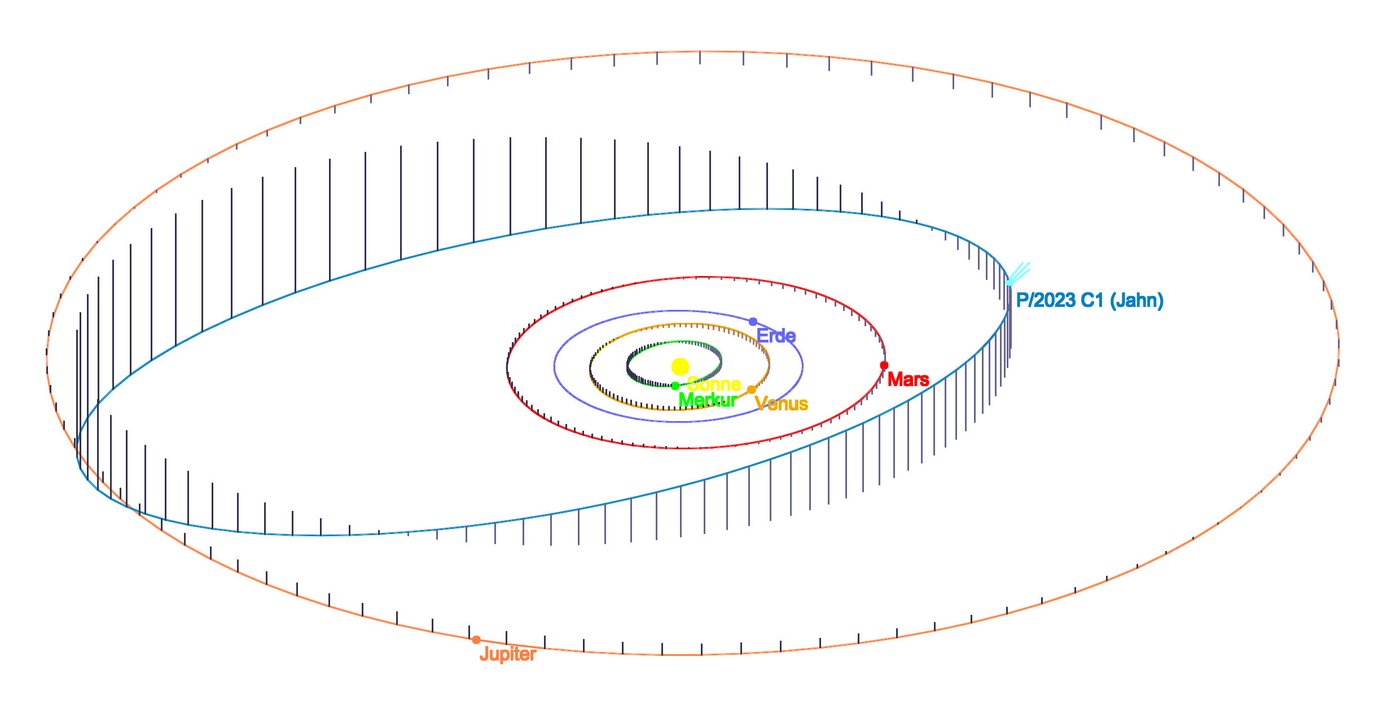P/2023 C1 (Jahn): First German comet discovery for 20 years
German amateur astronomer Jost Jahn has made a rare discovery with the remote-controlled ROTAT telescope of the Foundation Interactive Astronomy and Astrophysics, that is maintained by the Haus der Astronomie: Comet P/2023 C1 (Jahn), now named after its discoverer, orbits the Sun in an inclined orbit between the two planets Mars and Jupiter. This is the first comet discovery by a German since 2002
ROTAT (Remote Observatory Theoretical Astrophysics Tuebingen) is a 60cm telescope managed by HdA at the Observatoire de Haute Provence that can be remotely operated via the Internet and is available to students and teachers free of charge. The remaining observation time is given to amateur astronomers. Jost Jahn, a dentist from the island of Amrum in northern Germany, is a long-time ROTAT user and specializes in the observation of Near-Earth asteroids and the targeted search for unknown small bodies in the solar system. He has already made a number of asteroid discoveries with ROTAT, including (471926) Jormungandr, a Near-Earth asteroid.
On ROTAT images from the night of 14-15 February 2023, Jahn incidentally discovered an object on 20 March that initially appeared asteroid-like, but upon closer analysis turned out to be extended. This means it was not an asteroid, but a comet surrounded by a cloud formed by outgassing, the so-called coma. In the following days, both archive images from earlier years and current images from various observatories not only confirmed the existence of the comet and its nature, its orbit was also determined with sufficient accuracy to predict its position in the sky in the future with sufficient precision.

Now officially named P/2023 C1 (Jahn) and, as is usual with comets, named after its discoverer, the comet has an orbital period of only 7.5 years, so it is considered a short-period comet. Its orbit is elliptical and clearly inclined against the orbits of the planets in our solar system. Similar to many asteroids, it can be found between the orbits of the planets Mars and Jupiter. Since the comet never comes close to the sun and it is not very large, it will never become a spectacular sight in the sky. It can only be observed with photographic means with medium sized telescopes.
Several dozen comets are typically discovered each year, though nowadays mostly automated as part of systematic sky surveys with larger professional telescopes. The last comet discovery by a German was more than 20 years ago. At that time, Sebastian Hönig, an astrophysics student from Dossenheim near Heidelberg visually detected comet C/2002 04 (Hönig) with his 25cm telescope. Hönig is now a professor of astrophysics at the University of Southampton.
ROTAT was started by the late astronomy professor Hanns Ruder from Tübingen, and is now operated by the Foundation for Interactive Astronomy and Astrophysics. Operational support for the telescope is provided by Haus der Astronomie.
